Planning a trip to Japan but don’t know what to pack or what to wear in Japan? We’re going over what to wear in each season and how to create a perfect wardrobe. Keep reading to find out!
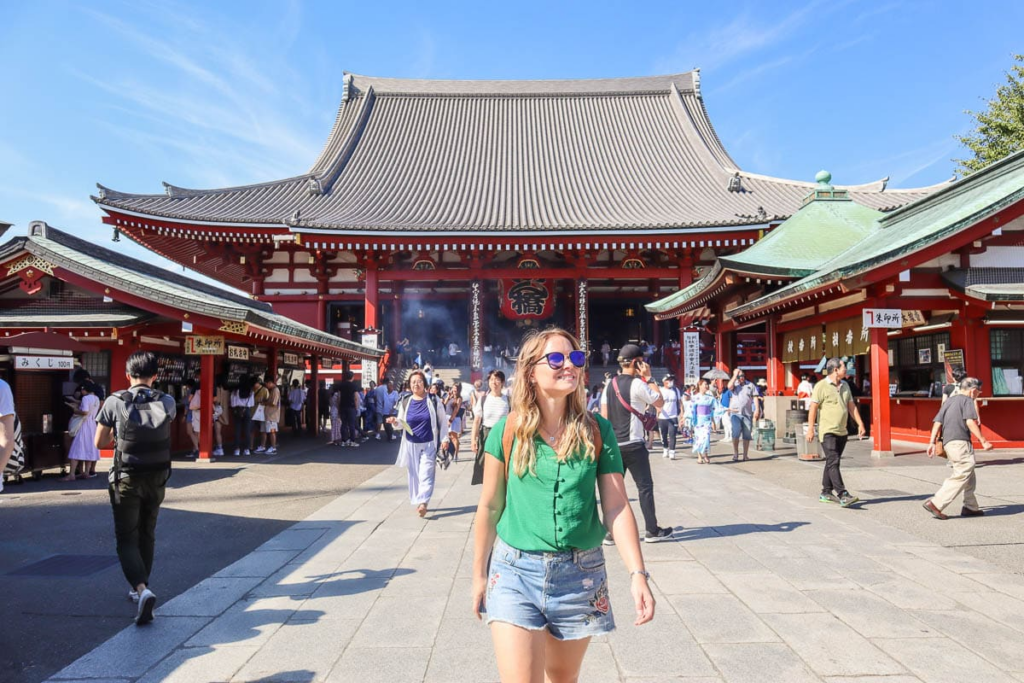
Planning a trip to Japan?
With tickets booked and bags ready packed, you might find yourself pondering about what outfits to bring along. Unsure if you should pack beachwear or layer up for chilly nights?
It’s a common question, especially for first-time visitors.
Balancing comfort for long travel days with the desire to look stylish in photos while avoiding inappropriate attire can feel overwhelming. But worry not! Whether you’re a seasoned traveler or new to the scene, we’ve got you covered.
In this guide, we’ll simplify things by breaking down outfit suggestions based on the season, as Japan’s weather can vary significantly throughout the year.
What to wear in Japan – According to seasons:
1. Spring Season
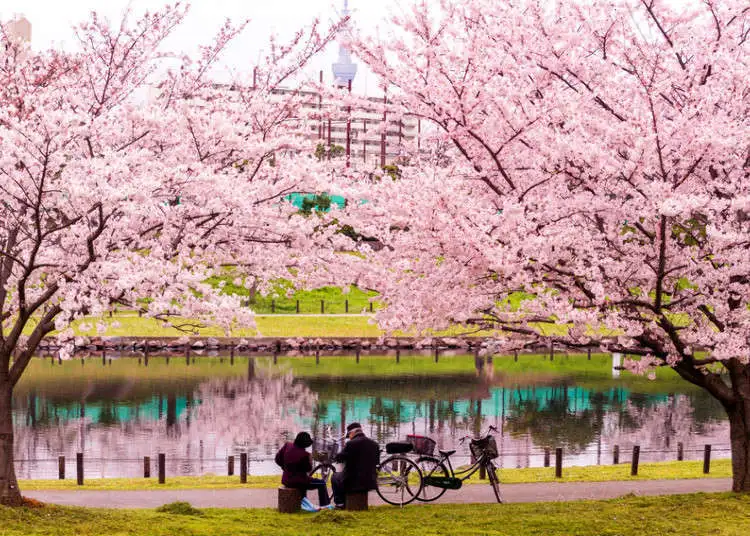
Spring in Japan is undeniably stunning, making it the perfect time to visit.
Spring season in Japan lasts from March to May and is famous for its beautiful cherry blossoms, or sakura. Temperature can fluctuate between 5°C to 23°C, with clear sky and cool weather in the first half, followed by lots of sunshine.
Pack a coat or jacket if you’re travelling early in the season, and shirts, cardigans, or sweaters for the rest of the season. Layer up in styles that suit you for a relaxing and delightful experience.
What to wear:
- Light, breathable clothing: Pack comfortable fabrics like cotton or linen to stay cool during warmer days.
- Long-sleeved shirts or blouses: These work for both mild and cooler days. Pair them with a light jacket or cardigan for added warmth when needed.
- Cardigans or light sweaters: These are perfect for layering and can be easily removed when the temperature rises.
- Trousers or lightweight pants: Choose comfortable bottoms that are suitable for walking and exploring the sights.
- A waterproof jacket or umbrella: Spring in Japan can bring occasional showers, so it’s wise to be prepared for rain.
- Accessories: Don’t forget sunglasses, a hat or cap for sun protection, and a small backpack or tote bag to carry essentials while sightseeing.
2. Summer Season
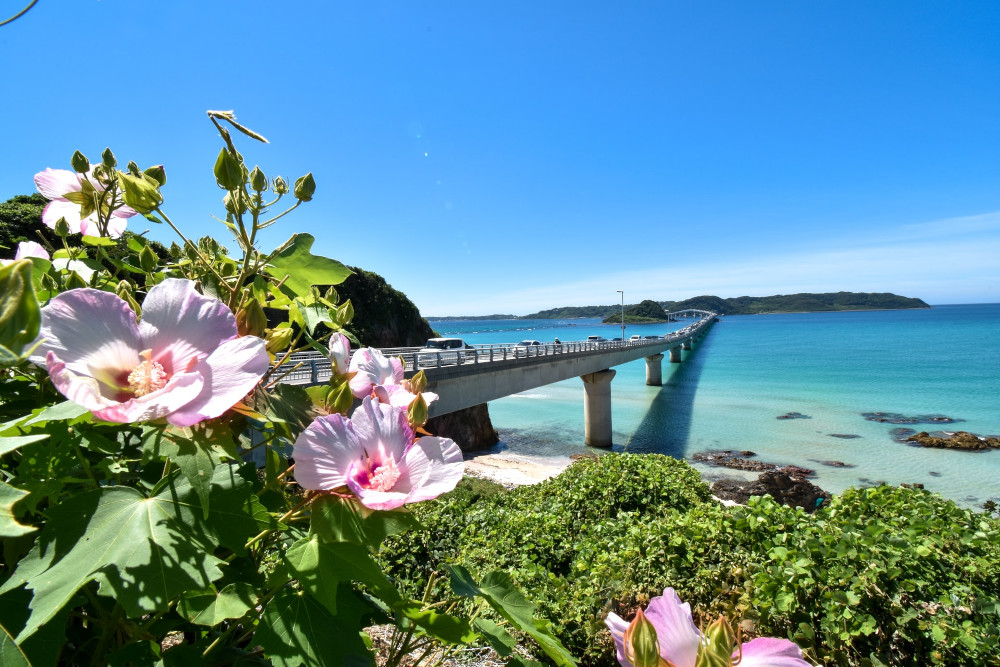
Summer in Japan lasts from June to August, and its intensity varies depending on what region you are in. In Tokyo and Osaka, temperatures can reach 35℃ throughout July and August, with excessive humidity making it feel even hotter. Honshu, Saitama, and Gunma are some of the hottest areas, whereas Hokkaido offers cooler, more pleasant weather with an average temperature of 20℃.
To stay cool in the heat, wear light, breathable clothing like short-sleeved shirts or sundresses, especially from July to August. While shorts are normally acceptable, dress more modestly when visiting shrines or temples. Sun protection is essential, so pack a hat, sunglasses, and even an umbrella for shelter or rain.
What to wear:
- Thin, Breathable Shirts: Pack some lightweight, short-sleeved shirts made from breathable fabrics like cotton or linen to combat the heat and humidity.
- Sundresses: Sundresses are a stylish and practical choice for women, offering a breezy option to beat the heat. Look for dresses made from lightweight materials with loose-fitting designs to allow for airflow and ventilation.
- Lightweight Pants or Skirts: If you prefer bottoms, choose lightweight pants or skirts made from breathable materials. Loose-fitting styles in light colors can help keep you cool while exploring Japan’s bustling streets and sights.
- Shorts: Shorts are a popular choice for both men and women during the summer months in Japan. However, keep in mind that some cultural sites may have dress codes that prohibit shorts, so it’s wise to have an alternative option available.
- Hats and Caps: Protect yourself from the strong summer sun with a wide-brimmed hat or a baseball cap. Not only do they provide shade for your face and eyes, but they also add a stylish touch to your summer ensemble.
- Sunglasses: Invest in a good pair of sunglasses to shield your eyes from the bright sunlight. Look for sunglasses with UV protection to ensure your eyes are adequately shielded from harmful rays while enjoying outdoor activities.
- Sandals or Breathable Shoes: Keep your feet cool and comfortable in sandals or breathable shoes during Japan’s summer. Avoid closed-toe shoes that can trap heat and moisture, opting instead for open-toe designs that allow for airflow.
- Light Scarves or Shawls: Lightweight scarves or shawls made from breathable materials can provide protection from the sun’s rays while adding a fashionable flair to your outfit.
3. Winter Season
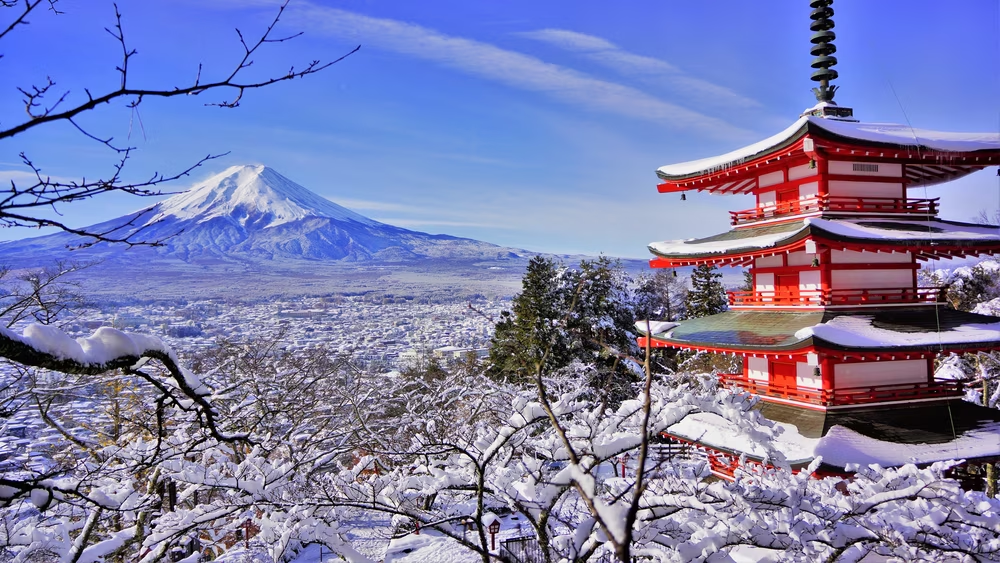
Winter in Japan, spanning from December to March, transforms the country into a snowy paradise. Across the nation, you can enjoy some chilly yet sunny days, often accompanied by clear, blue skies.
In the southern regions, temperatures range from 2°C to highs of 12°C, while Hokkaido, Tohoku, Hokuriku Shinetsu, and other northern areas experience colder conditions, with temperatures dipping from -10°C to 2°C. Snowfall is common in Tokyo and surrounding areas, albeit sporadic.
Prepare for the cold by packing essentials like a bubble jacket or down coat, gloves, earmuffs, scarves, and winter socks. Layer up, especially for chilly nights, and keep a coat or jacket handy for snowy days.
What to wear:
- Outerwear: Invest in a good-quality, insulated coat or jacket, preferably waterproof or water-resistant, to keep you warm and dry during snowy or rainy days. A down coat or a padded parka is ideal for colder areas, while a lighter jacket may suffice in milder regions.
- Layers: Wear thermal or moisture-wicking base layers, such as long-sleeved shirts and thermal underwear, to trap heat close to your body. Add a fleece or wool sweater for extra warmth, and top it off with a waterproof and windproof outer layer.
- Bottoms: Opt for thermal leggings or long underwear to wear underneath your pants or jeans for added insulation. Consider wearing thicker fabrics like wool or fleece-lined trousers to keep your legs warm.
- Footwear: Choose waterproof and insulated boots with good traction to navigate snowy or icy streets comfortably. Make sure they are roomy enough to accommodate thick socks for added warmth.
- Socks: Wear thick, thermal socks to keep your feet warm and dry, especially if you’ll be spending a lot of time outdoors. Consider packing extra pairs to change into if your socks get wet.
4. Autumn Season
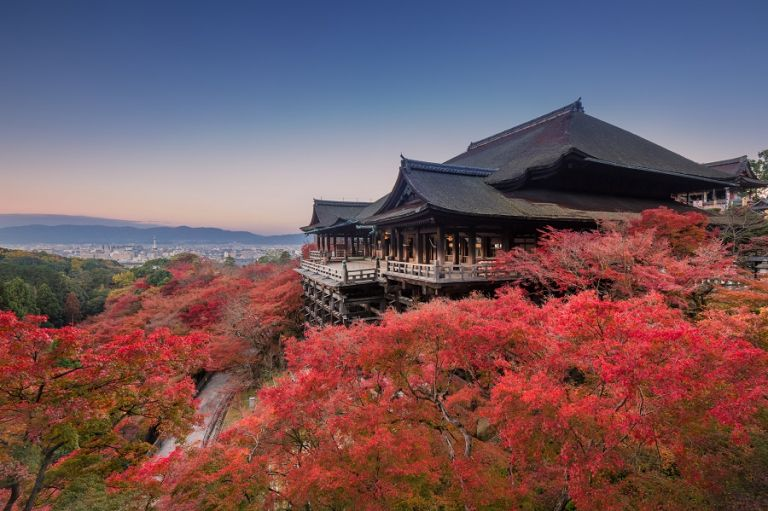
In Japan, autumn explodes with vibrant colors like red, orange, and yellow. This season, lasting from September to November, offers great weather for outdoor fun.
Temperatures in autumn range from 8℃ to 27℃. September starts warm but cools down as winter nears. Mornings are clear and sunny, but nights get chilly. Watch out for typhoons as they can affect the weather.
For early autumn visits, light shirts or dresses are perfect, but bring a jacket or scarf for chilly nights. Later in the season, it gets colder, so pack jackets, sweaters, or coats, and layer up to stay cozy.
What to wear:
Early Autumn (September to mid-October)
- Daytime: Light shirts, blouses, or dresses. Comfortable pants or skirts.
- Evening: A light jacket, cardigan, or scarf to keep warm as temperatures drop.
- Footwear: Comfortable walking shoes or sneakers.
Late Autumn (mid-October to November)
- Daytime: Long-sleeve shirts, sweaters, or light jackets.
- Evening: Heavier jackets, coats, or warm sweaters. Consider layering with a thermal shirt or an extra sweater.
- Footwear: Boots or warmer shoes.


